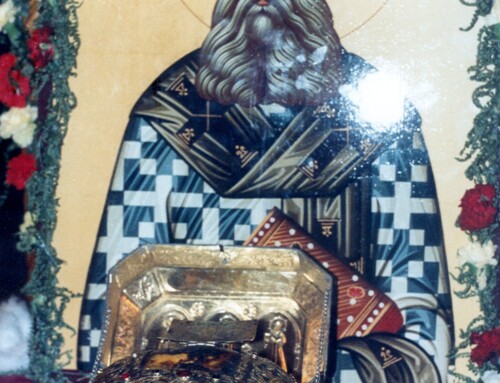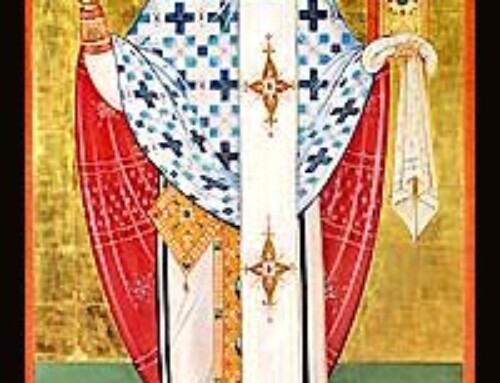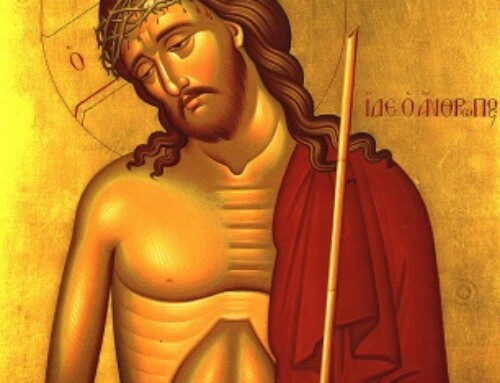Word Magazine March 1989 Page 5-6
RELIGION: ITS ROLE IN SOCIETY
Can It Be a Vehicle by Which Women and Men Are Allowed
Common and Equal Experiences of Humanity?
by Laurice B. Maloley
Religion broadly defined in Funk and Wagnall’s Standard Encyclopedia is “a way of life based upon man’s ultimate relation to the universe or God”. For me religion, and more specifically CHRISTIANITY is a spiritual journey, a path or road which could lead to happiness and peace — “the peace that surpasses all understanding.”
The foundation of the spiritual life of a Christian lies in the Gospel of Jesus Christ (His birth, life, death and resurrection) and in the GOOD NEWS He preached. Christ nowhere distinguished between men and women as children of God and objects of His redemptive ministry. Women in the life of Jesus of Nazareth were present from the ANNUNCIATION to the ASCENSION. It was through a woman that God became flesh, not using her as a passive instrument, but making a realization of His plan of love depend on her acquiescence and her free adherence to her faith. Mary participated in the incarnation not with her body only, but above all, by her trust to live in God’s will. (“Behold the handmaid of the Lord; be it unto me according to your word,” Luke 1:38.)
Jesus did not say much about women; His views were expressed primarily in His actions, and these actions constituted a dramatic breakthrough within the society of His day. By the regard He showed to women, by the treatment He gave them, by the purity and universality of His love and ministry, Jesus erased all lines of superiority or inferiority between men and women and placed all on the same level of grace.
One of Christianity’s greatest contributions to society is that it brought religious equality to woman with man before God. In the Early Church this was manifested by the inclusion of women in the apostolic meetings for prayer; there was a great variety of ministries in
which women served. Their work was of a charismatic nature; they taught, served as missionaries as well as in congregations, visited the sick and prepared women for baptism and burial.
In the Orthodox Church of the Byzantine period, the ordination of Deaconesses was similar in form and substance to that of the higher clergy (deacon, presbyter or bishop), in that it took place within the holy sanctuary and during Divine Liturgy. (Orthodox Women — Their Role and Participation. Symposium O Agapia, Roumania — September, 1976) In the course of the centuries, the woman’s role in the life of the Church diminished. It is interesting to note that deaconesses were ordained in the Orthodox Church until the 12th century. The Reformation and other evolutions of the Church made no provisions for the office of Deaconesses and their ordination ceased. However, other traditions, customs and mores of the Middle Eastern culture of yesterday remain very much a part of the Orthodox Church traditions in North America today.
Babies are churched according to the Old Testament custom with male babies being entered through the Royal Doors into the Holy Sanctuary; while female babies are taken up to the Doors and in some churches only as far as the top step leading to the Holy Sanctuary. The babies are always presented for churching by the mother. During the wedding ceremony, a Gold Crown is placed on the head of the groom while a Silver Crown is reserved for the bride.
The churching of babies can be understood in Old Testament practices, but what is mind-boggling is the continuation of discriminating practices after baptism. The rite of baptism is said to be the acceptance of the baby into the Christian community, which is said to adhere to the NEW TESTAMENT of Jesus Christ. “It is finished” — the old law of Moses no longer is valid, but rather the ‘NEW COVENANT’, the acceptance of which is said to put male and female on an equal level of grace through Jesus Christ. (“To all who received him, who believed in His name, He gave power to become children of God” —John 1:12).
The rite of baptism abolished the Old Testament rite of circumcision as a manifestation of entrance into the religious community, however baptism into the Church of Jesus Christ did nothing to eradicate the Old Testament traditions and views in relation to women. The Church continues to stigmatize woman because she was born female, and as such has a menstrual cycle each month, albeit, a biological function among other biological functions necessary in the procreation process. Jesus publicly cured a woman who had an issue of blood for over 12 years (Matt. 9:20) and all four Gospels relate the incident, therefore it is significant in the earthly ministry of our Lord. Here we are almost 2,000 years after His crucifixion, when He shed His blood for the salvation of all humanity, using the issue of blood to keep women on the outside looking in.
The old traditions and practices reinforce a false image of male supremacy and further define women as inferior beings. A society based on a superior/subordinate power structure breeds discontent and violence. Religion can help woman become aware that she is an integral part of humanity and she should be willing to take her place along side man before God. If humanity is to be purified and Christianized to a far greater extent, it is imperative to have an enlightened, spiritual womanhood. By nurturing and developing her spirituality, a woman will grow in Grace through Jesus Christ and will view herself with self-esteem. She will be able to ‘passover’ from her individuality to her universality and to be in harmony with reality at its deepest level. She will come to understand that spiritual reality is unitary, in her wholeness she will be able to take responsibility for herself and to develop to her full potential. Through her spirituality, she can come to the realization of her ‘oneness’ with man before God. (“Male and female He created them and called their name Adam,” Gen. 5:2). Eve then was Adam’s second self and differed from him in sex only, not in nature.
Both men and women were endowed by God for equality and mutual interdependence. With equality, woman’s position would be improved and it can’t help but improve all aspects of society. Men would be free of the pressures imposed upon them by the double standard of our society. Both men and women will be able to seek responsibilities within society compatible to their quality of life. It should follow that society would benefit from happy, achieving, satisfied and loving individuals.
Equality and mutual interdependence is achievable by adhering to Christian principles (“Love ye one another, as I have loved you,” John 15:12). In a family, the microcosm of society not founded on a power-oriented structure, mutual interdependence is manifested by love, respect, understanding and caring, not only for oneself, but for all fellow human beings. There is no longer “me and you” but rather “we”.
Jesus stated in the Sermon on the Mount, that Christians are to be to life what salt is to food. This is a perfect admonition for the enlightened Christian Woman, as the family is the initial educational unit for religious growth and development. It is precisely in this area that a woman could contribute much of her talents to the shaping of society.
Through the teachings of Jesus Christ and by His example, we have been learning that life itself is a religion. Nothing is more sacred than a human being, and that the end of all institutions, whether the home, the Church or the educational establishments, is the development of the human soul.
Laurice B. Maloley is a member of the Church of St. John of Damascus in Dedham, MA.





